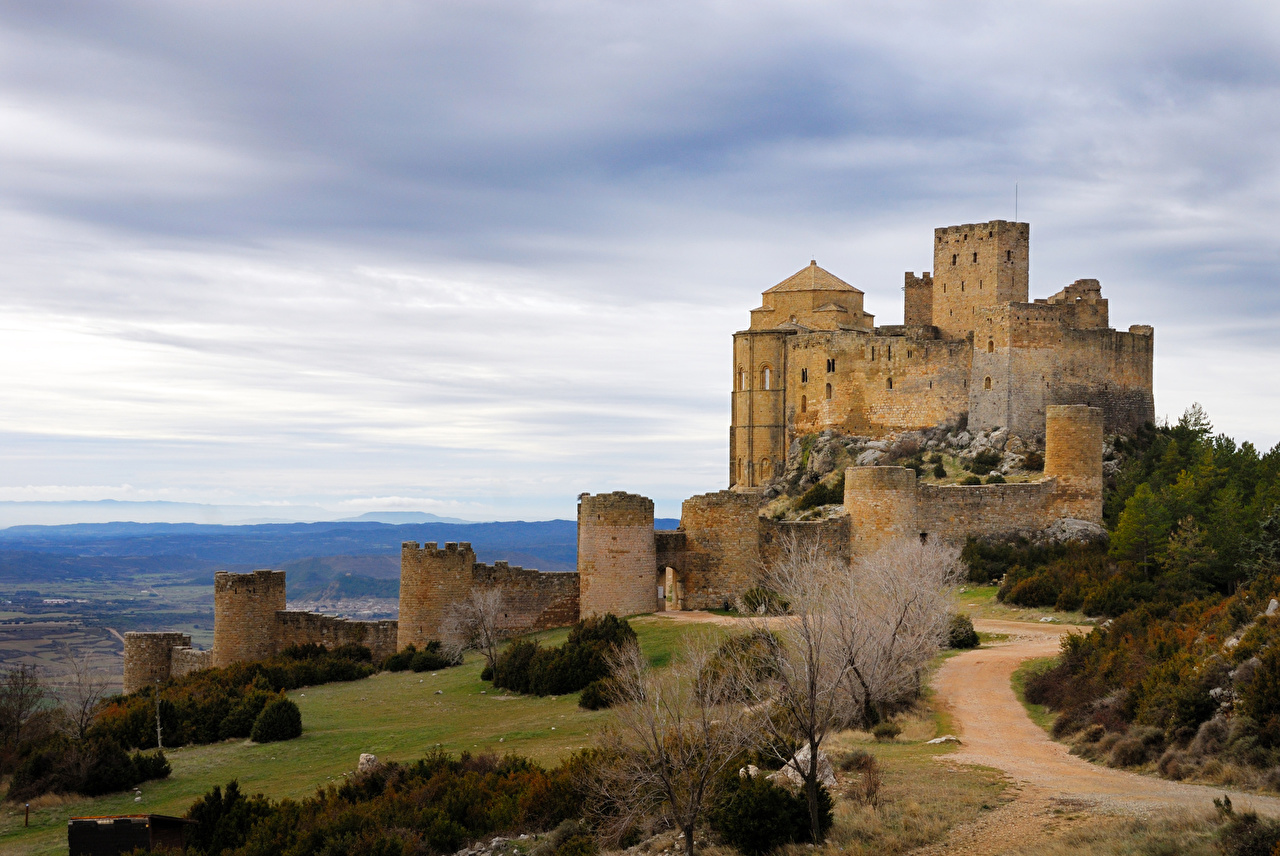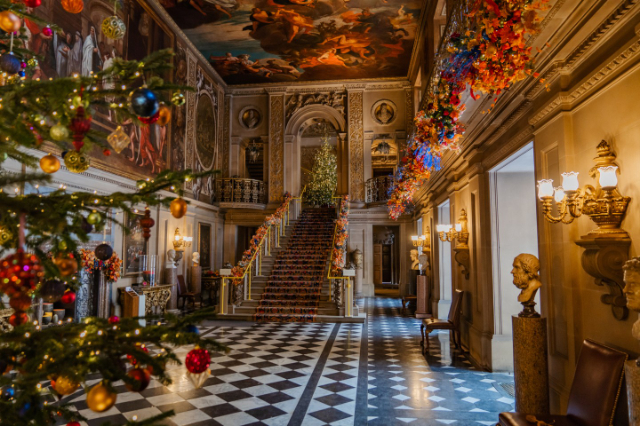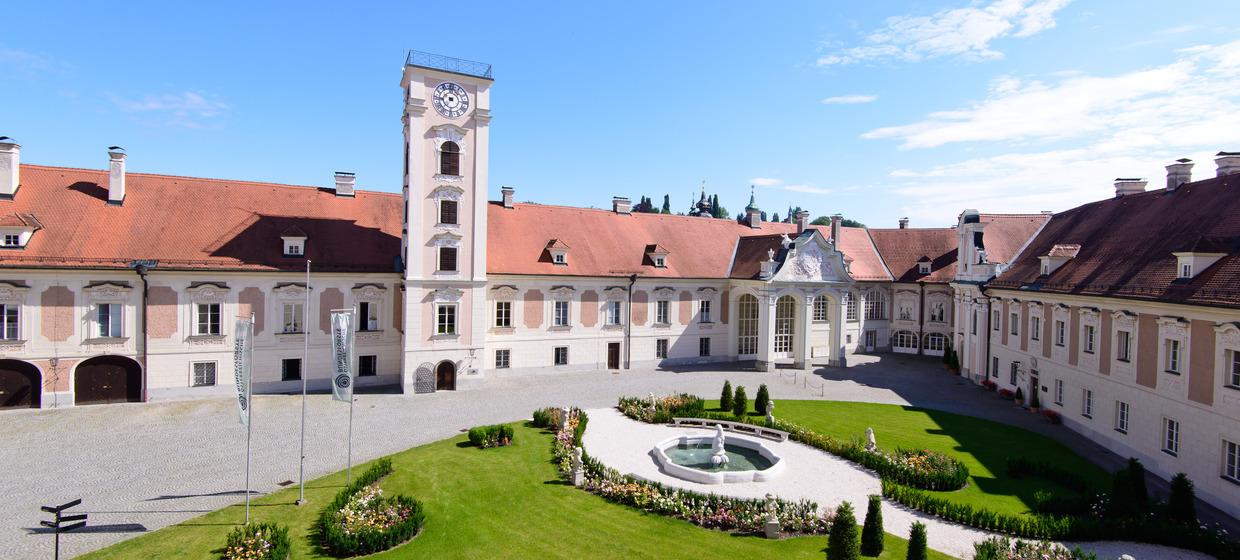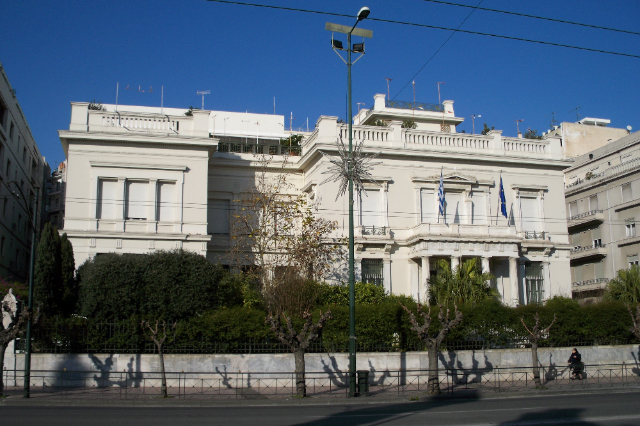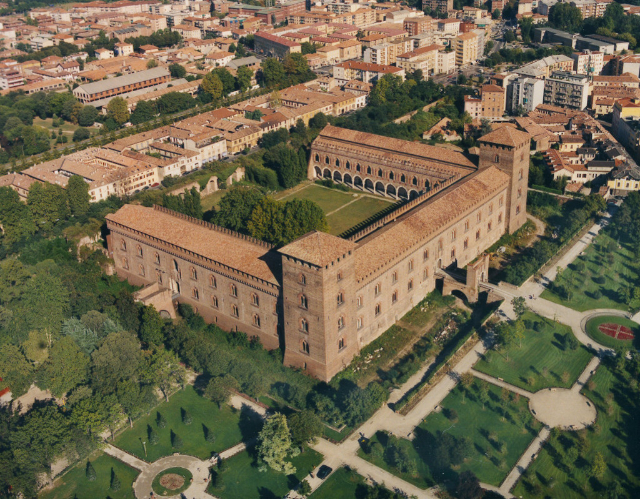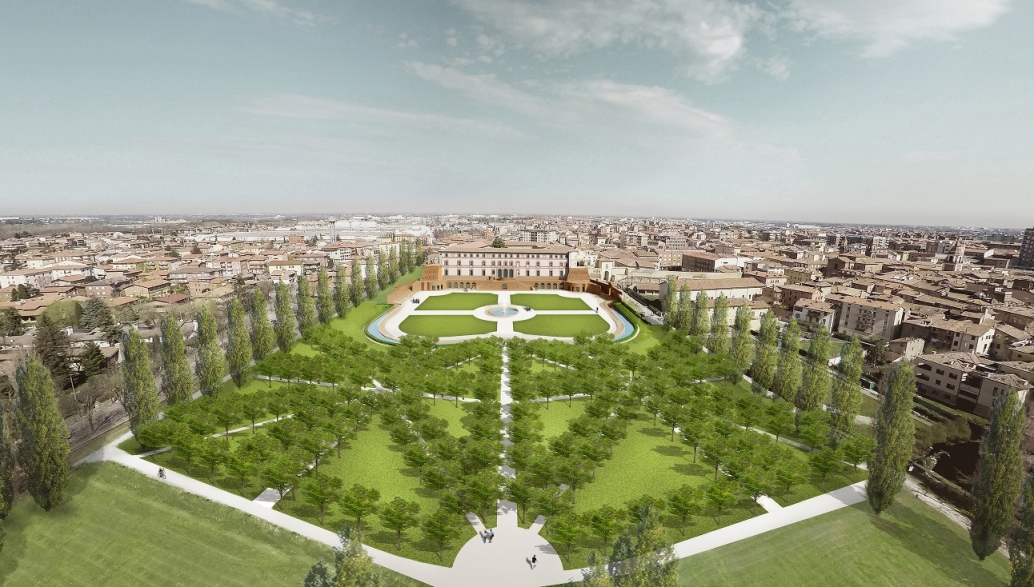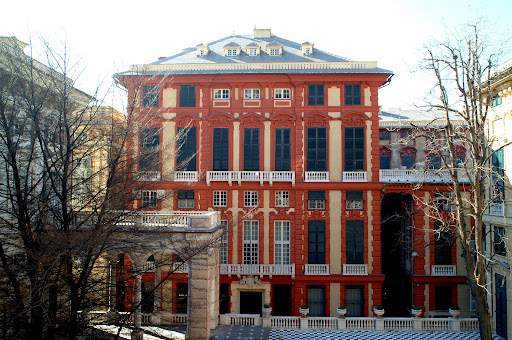The castle of Loarre is an imposing Romanesque fortress built at the end of the 11th century by order of King Sancho Ramírez I of Aragon, on the remains of an ancient Roman fortress. It is considered the most important Romanesque castle in Spain. It has an irregular layout with double walls and cylindrical towers. Inside is the 12th century Romanesque church of Santa María. The church has three naves, with a barrel vault. Of particular interest are the capitals, decorated with motifs of Romanesque iconography. Originally a royal residence, it later became an Augustinian convent.
The first phase began around the year 1020 at the hands of the great king of Sancho Sancho el Mayor, who in his eagerness to protect the Pyrenean counties from Muslim attacks, took advantage of the pre-Pyrenean mountains of Huesca to install a series of forts that would create an authentic fortified frontier, of which Loarre would be one of its last links. Of this first phase, the two main towers and the Romanesque chapel of Santa María stand out. The second phase was initiated by his grandson, the second king of Aragon, Sancho Ramírez, around 1071, who, with the support of the Holy See, decided to surround his grandfather’s old fortress, which was still a frontier, with a large monastery that would house an order of Augustinian canons, combining in Loarre the sword and the cross, the military and the monastic functions. Of this phase highlights the impressive church of San Pedro, a unique jewel of Romanesque architecture crowned by a spectacular dome.
Supported by the Pope, Sancho Ramirez surrounded his grandfather’s old castle with a large monastery for an order of Augustinian canonical monks, combining the cross and the sword, the military and monastic functions in the same building. The most important construction of this phase is the impressive church of St. Peter, a marvel of Romanesque architecture, crowned by a dome.
The last phase of construction would be delayed until the end of the 13th century, and it is the wall marked by semicircular towers that runs over a perimeter of 170 m, and that surrounded not only the fortress, but also a small village that grew up underneath the castle, and that is the origin of today’s Loarre. It was at the dawn of the Renaissance when such a large fortress was finally abandoned, leaving its presence undaunted at the top of the Sierra de Loarre.
